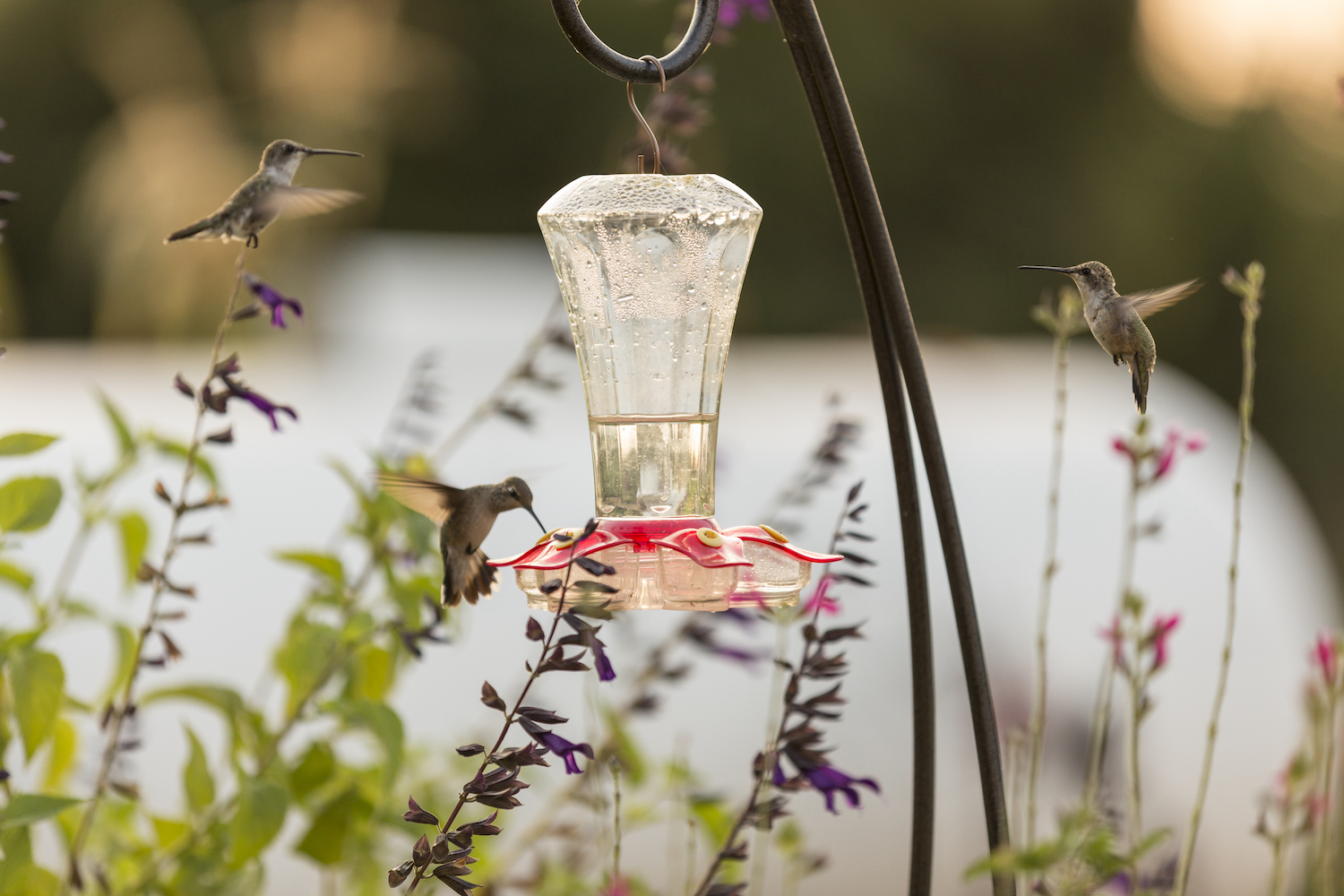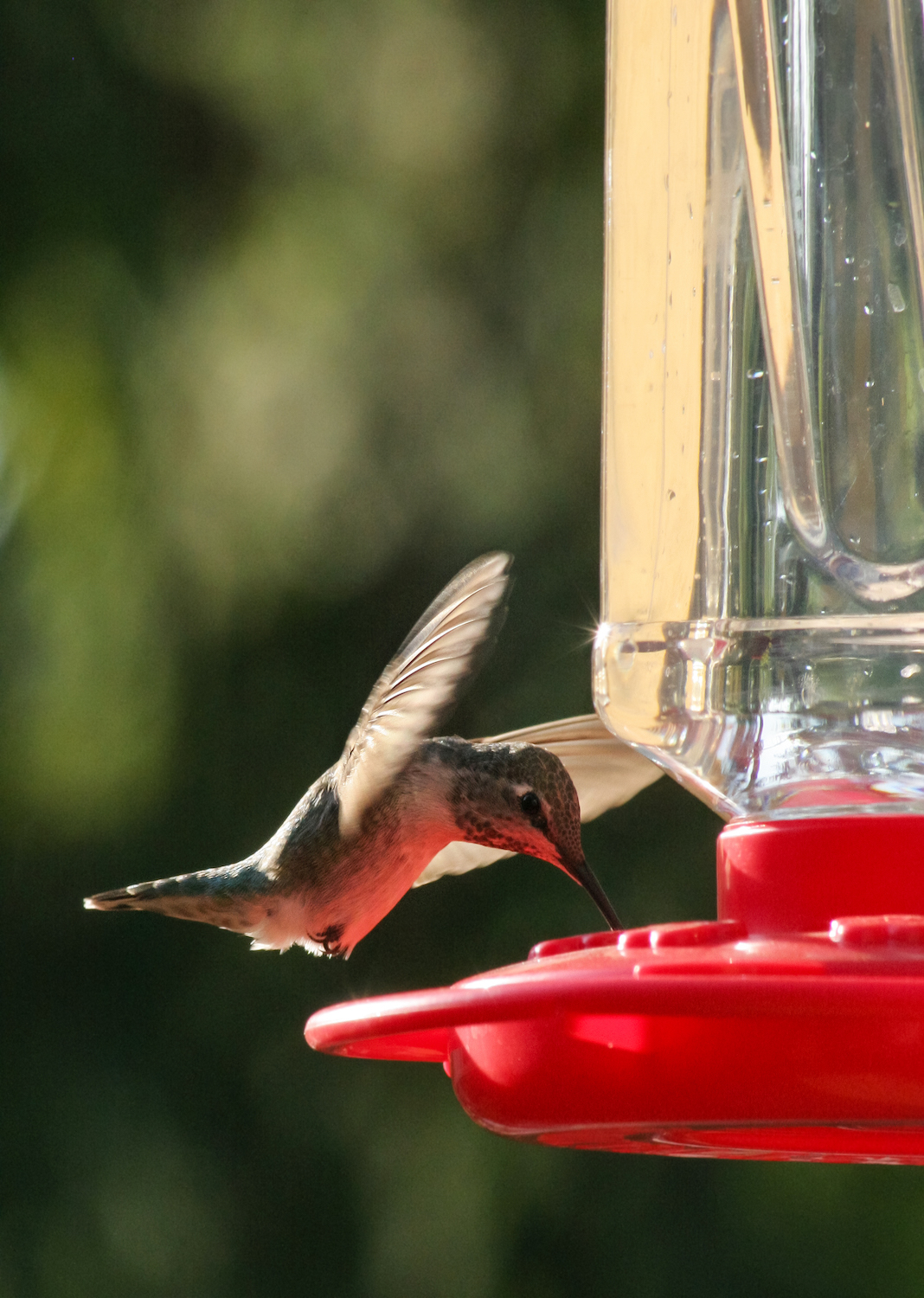
If you like to attract birds to your yard, it's time to consider when to put out hummingbird feeders.
Hummingbirds may be the world's smallest bird, yet these tiny, colorful creatures have a fast metabolism and a huge appetite. According to Birdlife International, hummingbirds can consume up to 12 times their bodyweight in nectar every day. That's a lot of flowers.
With habitat loss, due to deforestation, and pesticide poisoning, the biggest threats to this spectacular species, hummingbird feeders and native flowers in your backyard can provide much needed fuel on their long migratory journeys.
So when is the best time to feed hummingbirds?
When to put out hummingbird feeders

'The best time to put out hummingbird feeders around your home depends on where you live,' says D. Emma Greig, leader of Project FeederWatch at The Cornell Lab of Ornithology.
'Some places may have hummingbirds around all the time, but other locations only have them in the spring and summer.
'Watch for signs of spring such as flowers blooming and days lengthening. And look out for hummingbirds showing up in your yard too. That’s when you know it’s time to put out feeders.'
Hummingbird spring migration
Although hummingbirds are native to the Americas, with over 300 species, the highest diversity is in the tropics. Those living further north in the U.S. tend to see hummingbirds only in the warmer months, usually from March.
'The Ruby-throated Hummingbird begins its fall migration in September along the eastern United States,' says Jen McGuinness, author, Bird-Friendly Gardening.
'It will fly 600 miles nonstop across the Gulf of Mexico during its migration until it reaches the overwintering grounds in Mexico and Central America. Because of the long overwater flight, it’s important for the birds to find food to eat and store energy for the long journey.'
'Beginning in March, the hummingbird will begin to fly north, feeding from early season flowering plants along the way as it gradually makes its way back up the eastern coast of the U.S.' As well as the best flowers for hummingbirds, you can opt for feeders for your yard, too.
'Hummingbirds that are found west of the Rocky Mountains, such as Allen’s and Rufous Hummingbirds, also migrate but can also be year-round residents in certain areas.'
Where to place your feeder

'To attract hummingbirds to a new feeder, place it near blooming flowers early in the season,' says Jen McGuinness. 'Once a hummingbird knows supplemental food will be supplied, it will return to the spot each year.
'You can also set feeders up on balconies, patios, and by windows to get a closer view of the birds. Depending on how many hummingbirds visit the property, you can use several small feeders or a few larger ones.'
It's important to keep feeders clean. Rinsing or scrubbing the feeder under hot tap water, or with a weak vinegar solution is all you need to do before refilling with sugar water. In cooler weather, once a week is recommended and in hot weather clean feeders twice a week, to prevent harmful bacteria from building up.
'Hummingbird feeders that provide sugar water nectar but are not regularly cleaned and refreshed can do more harm than good,' says Jen McGuinness. 'A hummingbird’s tongue can swell from the bacteria in expired sugar water, and can ultimately cause death.
'When cleaning feeders, avoid using dish soaps, as this can leave harmful residue in the feeder.
'If regularly cleaning feeders is not a possibility—either due to schedules or accessibility—then it is better not to use bird feeders at all.'
What to feed hummingbirds

'The best recipe for hummingbirds is the most simple: white sugar and water in a 3:1 or 4:1 ratio of water to sugar,' says D. Emma Greig, leader, Project FeederWatch. 'One tip is to boil the solution and let it cool before putting it in the feeder to make sure you kill any bacteria and give those hummingbirds the freshest solution possible.'
'Do not substitute the white sugar with honey, corn syrup, powdered sugar (confectioner’s sugar), or raw, unprocessed sugars to make the hummingbird food,' adds Jen McGuinness. 'These other sugars can be harmful to hummingbirds because they can ferment more quickly.
'To create a viable hummingbird habitat for a balcony or patio garden, there also should be a plethora of nectar-rich plants that will bloom throughout the season.
'Many of the plants that are attractive to hummingbirds—and have evolved to cater to hummingbirds for pollination—will be brightly colored but low on fragrance (since birds are attracted to flowers by vision), and are often tubular in form in order for a hummingbird’s bill and tongue to reach the nectar.'
According to Jen McGuinness, some native plants (depending where you live) that are attractive to hummingbirds include Red Columbine, Fire Pink, Anise Hyssop, Wild Bergamot and Butterfly Milkweed.







